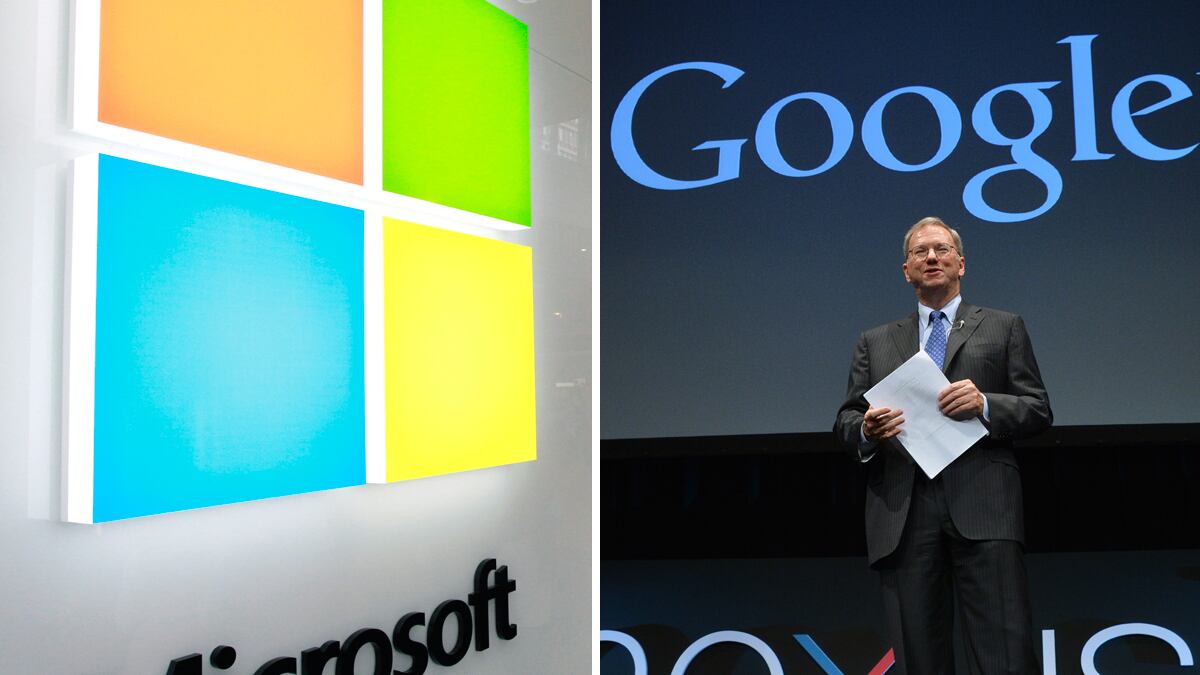In technology today, there’s the big three: Microsoft, Google, Apple. Today, Apple is perhaps the most successful company in the world. Google and Microsoft may get less attention and love, but they’re still giant players in search and advertising (Google) and PC operating systems and software (Microsoft). Last week, the two behemoths released earnings. And the results suggest that the highly valuable enterprises are showing signs of maturation, and perhaps even age. At both companies, the core businesses that fueled impressive early growth are falling off. To compensate, they’re pushing into lower-margin related businesses.

Google’s sagging earnings—accidentally released early because of human clerical error on the part of their filing firm—revealed two worrisome trends for the search-and-advertising giant. Some 96 percent of Google’s revenue comes from selling ads and nearly 70 percent of that revenue comes from sites Google owns, like its search page. But Google is plowing cash into hardware like smartphones and tablets. Google CEO Larry Page said in a statement before a call with analysts that “we took a big bet on Android back in 2005,” and that, today, “over half a billion Android devices” have been sold, with 1.3 million coming on line every day.
This is all true, Android is the most popular smart phone standard in the world. No one doubts Android’s growth or usefulness as a counterweight to Apple in smartphone operating systems. In the words of the Samsung ads, it’s not just “the next big thing” but the big thing. But it’s still not clear exactly how Google will make money from its foray into smartphone operating systems and handsets.
Google’s $12.5 billion acquisition of Motorola, the handset maker, last May, took a big chunk out of the company’s quarterly profits. This was the first quarter that the costs of the Motorola acquisition showed up on Google’s earnings. Unadjusted, Motorola’s operating loss was $527 million. Of that, $505 million came from the division’s cellphone segment. Overall, there was a 20 percent gap between income and revenues for the segment, and a 6 percent gap between income and revenue. Motorola also helps explain the most impressive number Google could report, a 45 percent growth in revenues over the year. Google’s third-quarter revenue jumped from $9.7 billion to $14.1 billion, but $2.58 billion of that came from Motorola—more than half.
Google’s core Web-and-search business, despite falling off in profitability, still reported strong results. Revenues from websites Google owns came in at $7.73 billion, about two thirds of Google’s total revenue. Less payments to sites in Google’s network for driving traffic to Google’s ads, revenues came in at $11.33 billion, a 15 percent jump from third quarter of 2011. That’s not bad. But it turns out that Google is having to spend more to get traffic. Cost-per-click, the revenue generated by an advertiser every time a user clicks on an ad placed by Google, decreased 15 percent since this time last years.
Which helps explain the foray into hardware. Larry Page, Google’s CEO, spent a good chunk of his remarks before the earnings call hyping Google’s new hardware: the Nexus 7 and the Chromebook, the ultrathin laptop manufactured by Samsung that bears a certain resemblance to another company’s offerings (it’s also much, much cheaper).
But here’s the problem: hardware is a low-margin, tough industry for everyone besides Apple. IBM, America’s original high-tech innovative-growth company, got out of the PC business in 2005, while HP and Dell are struggling. And with the PC market coming under pressure from Apple and smartbooks, Microsoft—the original hypergrowth company—is under pressure and trying to find something else that works. Ironically, Microsoft has been aiming at one of the markets that Google dominates.
Microsoft last week announced more than $16.01 billion in revenues and $5.3 billion in operating profits, an 8 percent drop in revenue and 26 percent drop in profits from the year-ago quarter. The story becomes more grim when you get into the individual divisions of the company. Revenues from the core Windows business were $4.4 billion, a 9 percent drop from this time last year, adjusted for deferring revenues from purchases of Windows 8, which will be officially released this Friday. With the consumer and business PC market roughly flat, there is little opportunity for growth in what Microsoft does best: sell licensed operating systems and enterprise software for PCs.
The Microsoft business division, 90 percent of whose revenues come from the Microsoft Office family of programs, saw nearly $5.7 billion in revenue this quarter, an adjusted 1 percent increase from last year.
Online services, which includes the Bing search engine, the MSN content portal, and Microsoft’s display advertising business, lost $364 million, down from $514 million this time last year. But this still continues a streak in which the division hasn’t turned a profit since 2005. Despite years of trying, Microsoft hasn’t been able to eat into Google’s lead in search. The most serious attempt has been Bing, on which the company spent a reported $10 billion since its launch 2009.
If PC growth is flatlining, then where can Microsoft put its operating system? One answer is Surface, the upcoming tablet that is being designed to work seamlessly with Windows 8 as well as Windows RT. Windows RT is an operating system made specifically for tablets will ship Oct. 26, the same day Windows 8 will be released. Peter Klein, Microsoft’s CFO, said in a call with analysts following Microsoft’s earning announcement that “October 26 only marks the beginning of a journey.” But it may also mark the definite end of an era of easy profits.
As Google and Microsoft slug it out in hardware, online advertising, and search, Apple sits in its walled garden, looking on with a mix of indifference and glee.






